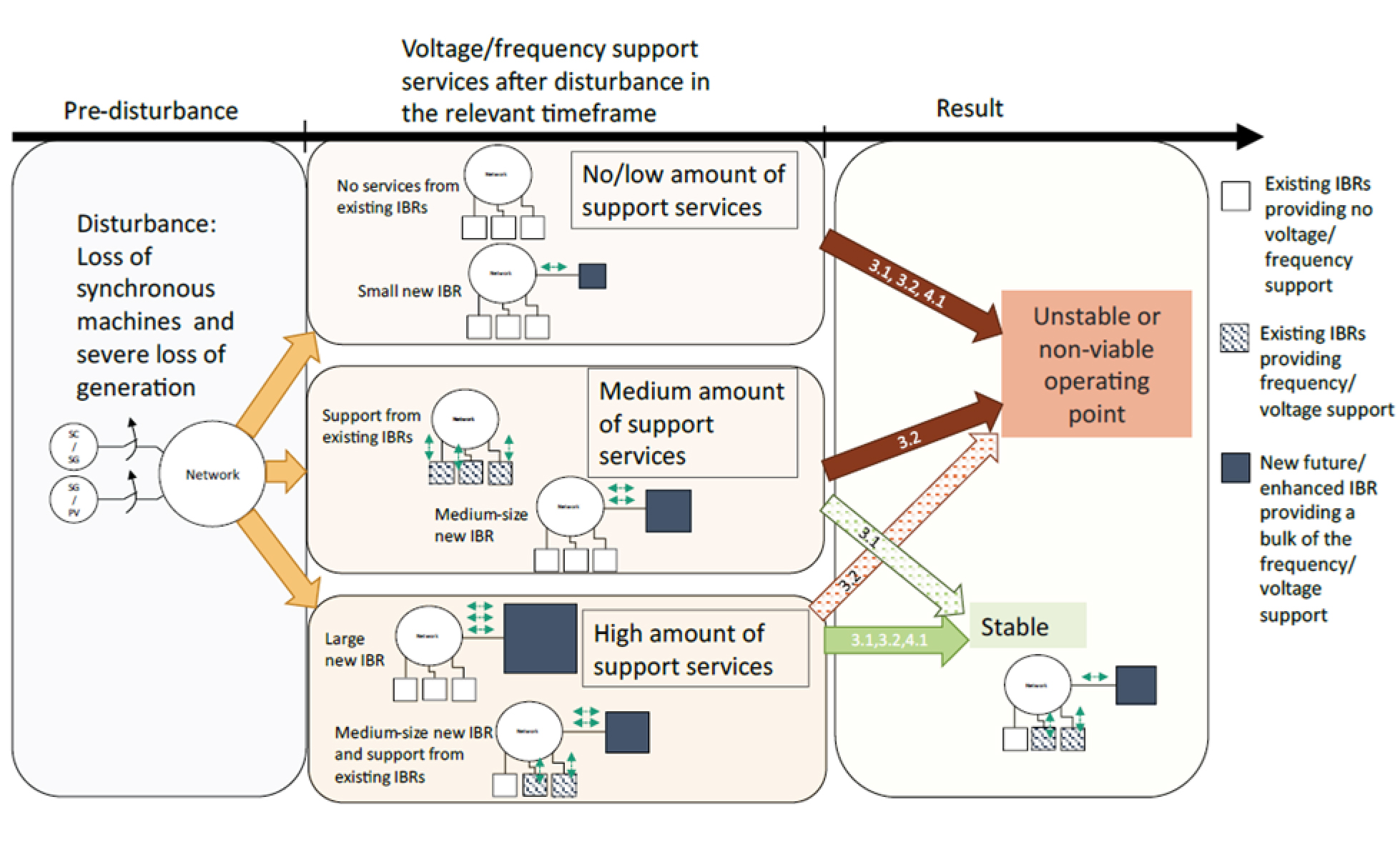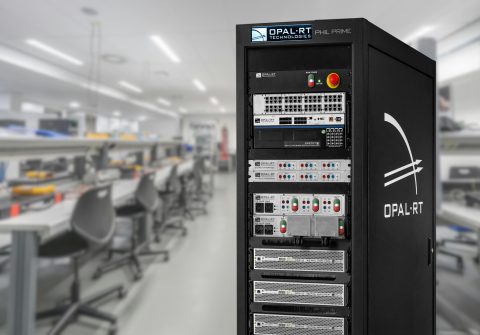
By: Deepak Ramasubramanian, Electric Power Research Institute (EPRI)
The power grid is at the cusp of transition with increasing amounts of inverter-based resources (IBRs) in the interconnection queue. These resources have a performance characteristic that is significantly different from the conventional synchronous machines that have supplied power to the power system as of now. As IBRs become more prevalent in the power network, they bring in new, previously unseen challenges. To overcome these challenges, it is pertinent that we leverage the full capability of the IBRs.
An IBR, unlike synchronous machines, does not have any natural characteristic. Rather, its entire performance is governed by lines of computer code. Therefore, an IBR’s behavior or characteristic is based upon the performance requirements that are present in the interconnecting region. As a result, it’s important for transmission planners to clearly define performance expectations for these resources, while avoiding the risk of overprescribing requirements.
Until recently, an IBR was not expected to provide much service or capability to the power network, as the understanding was that the synchronous machine fleet would take care of providing these capabilities and services. However, with the increased retirement of the synchronous machine fleet comes the need to leverage services and capability from IBRs. Such a paradigm brings the two different bookends of IBR control objectives to the forefront. At one end is a legacy control objective that can be termed as grid following (GFL). Here, an IBR operates in a constant power injection mode. When operating in this mode, the IBR provides no reactive power support to the network and additionally, provides no form of frequency dependent variation of output power. If one draws a comparison of this operating mode from a dynamic time domain paradigm to a steady state power flow paradigm, then such an operating mode would be modeled as a PQ bus in a power flow solution with Q limits set as 0. As one is aware, in a power flow solution, an increase in the number of such PQ buses for representing generators can quickly lead to a non-convergent scenario. A similar situation can arise even in a dynamic scenario, wherein for a grid disturbance event, if all the inverters continue to inject the pre-disturbance amount of active power and inject no reactive power at all, it can lead to an unstable situation.
At the other bookend, there’s a control objective that can be termed as grid forming (GFM). This control objective has been applied in islanded and standalone networks for many years and essentially portrays an IBR as close as possible to an ideal voltage source. If we map a dynamic paradigm again to a steady state power flow paradigm, then such an operating mode would be modeled as a slack bus in a power flow solution. We also know that it is not possible to obtain a converged power flow solution with numerous independent slack buses. A similar situation can arise even in a dynamic scenario wherein for a grid disturbance, if all the inverters operate as an ideal voltage source, it could lead to an unstable solution.
Between these two bookends of the control objectives lies a continuum of control that can be achieved by IBRs and is important for the stable and reliable operation of the future power grid. The concept of advanced grid support capabilities arises from this continuum. It is to be noted that if one keeps the focus on the notion of advanced grid support capabilities, then bookend terminology such as grid following or grid forming could be safely ignored, or at best left to sales and marketing personnel.
The safe and reliable operation of the power grid depends upon the existence of sufficient voltage control and frequency control. From a steady state power flow perspective, this implies the requirement of sufficient PV buses and distributed slack buses. From a dynamic perspective, the speed of frequency and voltage control is important to maintain a stable response for a power system disturbance. In an IBR, there usually exists two levels of control hierarchy. The slower level of control hierarchy acts as a plant level control which takes care of coordinating the outputs of the individual inverters or turbines within an IBR plant. This slower level control, if enabled with the capability to provide voltage and frequency response, can bring about a first level of improvement in advanced grid support capabilities. The faster level of control hierarchy is at the inverter or turbine level within an IBR plant. This faster level of control, if also enabled with the capability to provide voltage and frequency response, can drastically increase the advanced grid support capabilities that can be delivered by IBRs.
It is important to note that a variety of control methods or mechanisms can achieve these objectives. Therefore, leveraging advanced grid support capability should be approached from the perspective of performance requirements rather than control architecture. Enabling capability in existing IBRs can also help improve the leverage of advanced grid support capabilities. Today, many IBRs operate with higher level plant control delivering functionality of voltage and frequency response, while the inverter or turbine level controls usually operate to meet an objective of following the power commands from the plant level control. Moving some of these control objectives down to the inverter level, either through existing control architecture or via new forms of control architecture, can help with leveraging advanced grid support capability.
IBRs can be evaluated in multiple simulation domains if the necessary cautions are taken to bring about model interoperability and parameterization.
Deepak Ramasubramanian
Electric Power Research Institute
Recent work through the Services Task Force of the Energy Systems Integration Group (ESIG) highlights the advantages of using the control objectives at inverter level to leverage advanced grid support capabilities. The evaluations carried out by the task force identify the impact of both bookend IBR control objectives while also showcasing the nature of the continuum of control.

Further, the evaluations also showcase the importance of appropriate parameterization of models when comparing IBR operation across simulation domains. The figure above showcases how many different aspects of leveraging advanced grid support capability from IBRs can be evaluated in multiple simulation domains, if the necessary cautions are taken to bring about model interoperability and parameterization. A recent IEEE CIGRE effort on this topic could bring about interoperability across simulation domains in a more efficient manner.
IBRs can be controlled to provide any form of dynamic behavior as desired, ranging from constant power operation, all the way to being a first resource on a black start energization sequence. Their impact on the network is however based on definitions of expected performance, capability, and subsequent utilization of this capability. As more such resources interconnect to the power system, leveraging this vast available capability would be crucial to securing a reliable and resilient operation of the bulk power system. Let’s not be weighed down by bookend terminology and notions, but rather utilize this opportunity to recognize the myriads of grid support capabilities that exist and can be leveraged such that order can emerge from chaos.




